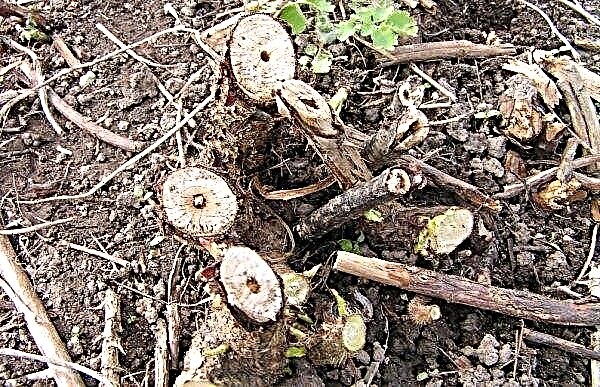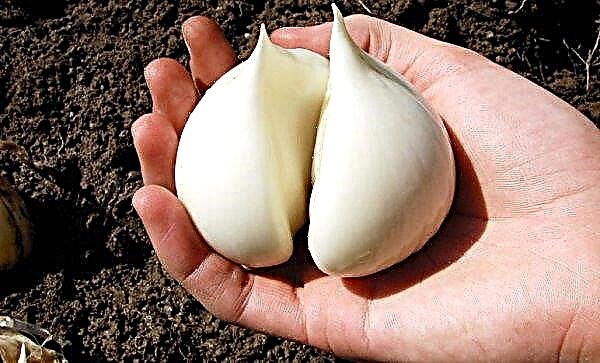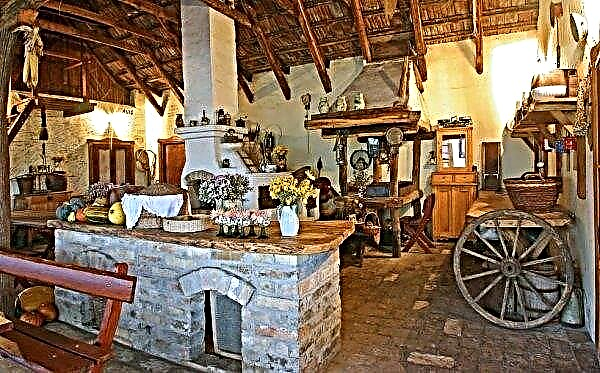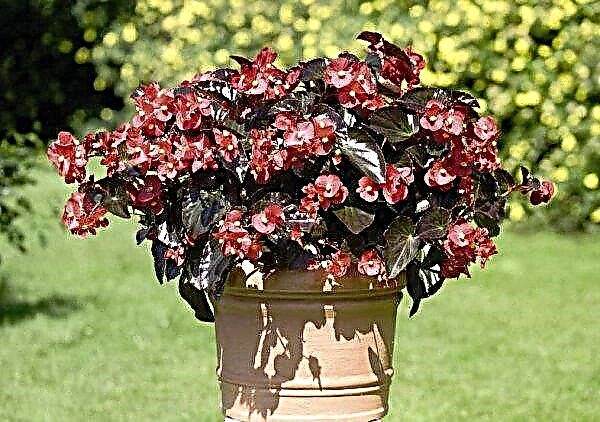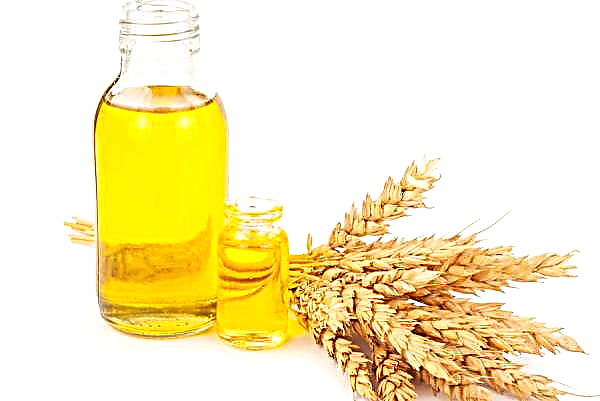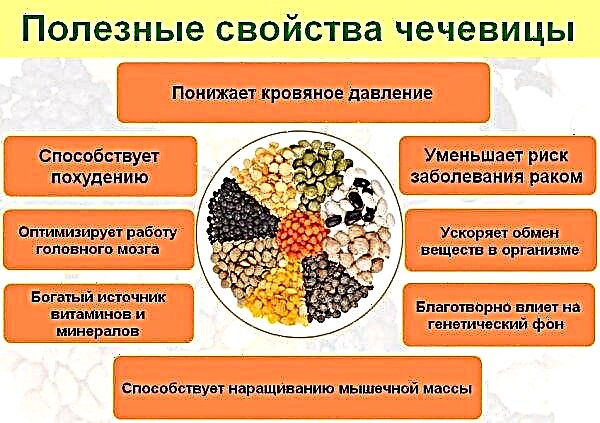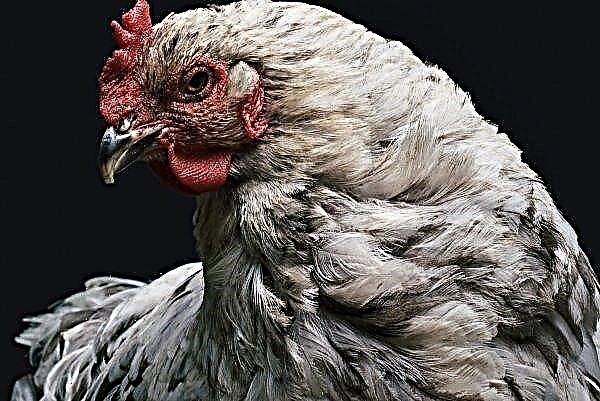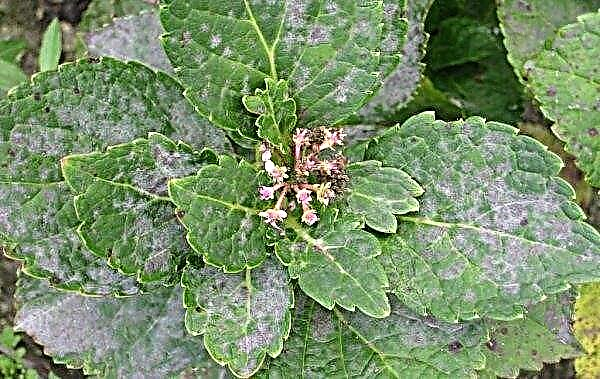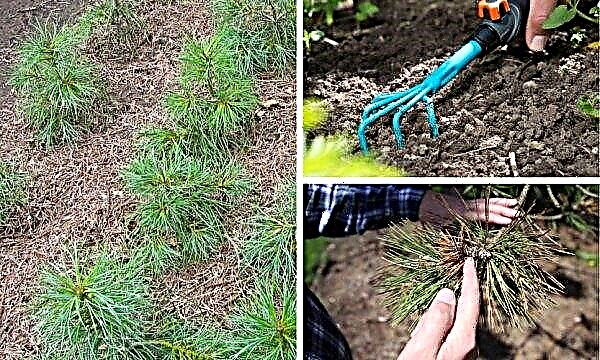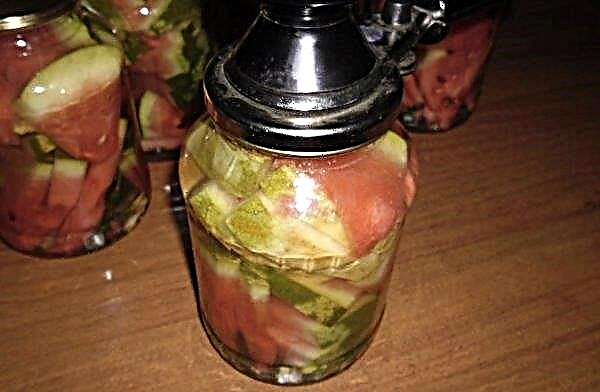Farmers have certain requirements for radishes. Early varieties that produce large-sized fruits that are resistant to various diseases and shoots are highly valued. Read about the most valuable cultures and their features below.
The best varieties of radish
Especially popular among summer residents are the varieties:
- Heat - the fruits ripen in 18–27 days. It is characterized by a high level of fecundity and resistance to flowering, various infections and fungi. Fruits of a rounded shape are distinguished by high commercial qualities, are painted in pink-red color, with a white tip.
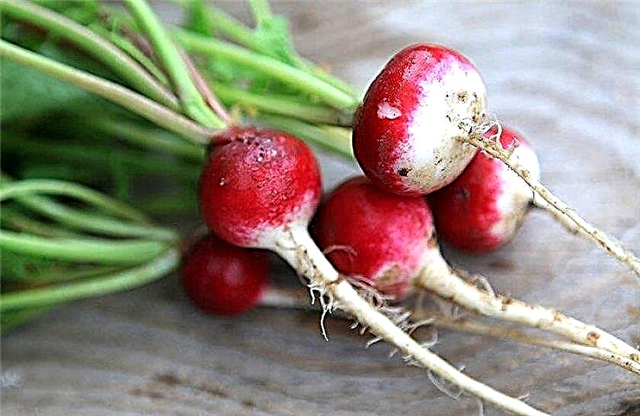
- Alyoshka - early ripening high-yielding hybrid, ripens in 20–25 days. Culture is not prone to shooting. Fruits of red color are rounded in shape, have the same size and dense structure.

- Cherry belle - the ripening period is 22–25 days. Plants form even spherical root crops weighing up to 20 g. The fruit color is saturated red. The pulp is snow-white, juicy, slightly sharp.
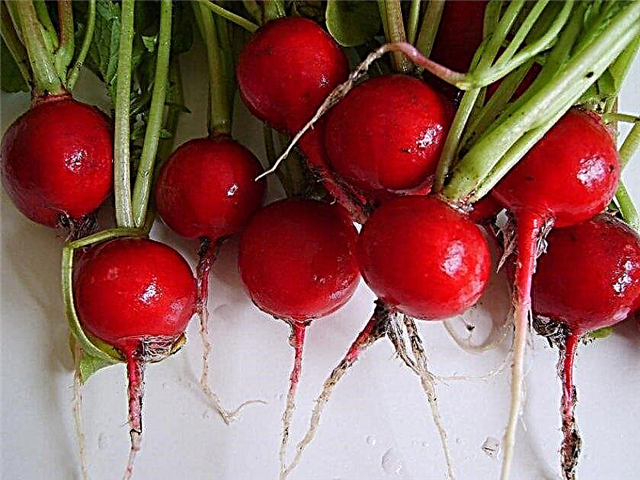
- Ruby - the fruits ripen in 29–31 days from the moment of planting the seeds in the ground. Suitable for open and protected ground. It is characterized by good taste. The maximum weight of the fruit is 28 g. Their surface is painted a red-raspberry shade, and the flesh is snow-white.
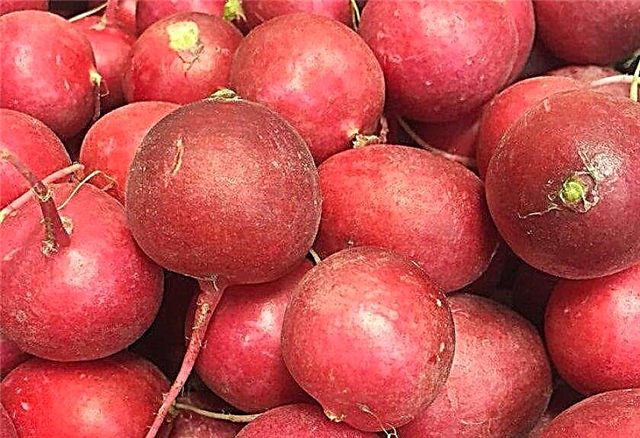
- Krasa Altai - an early ripe variety, resistant to cracking of fruits from increased humidity and flowering. The fruits are medium sized, up to 20 g in weight. Their surface is painted in ruby red color. On the cut, the thick flesh is snow-white, secrete a large amount of juice.

- Zlata - matures on average in 25 days. It is distinguished by a golden color uncharacteristic for radish. The surface of the fruit has a rough structure.
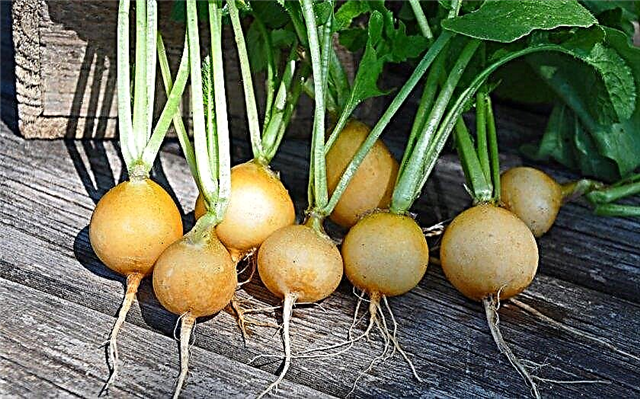
- Dawn - an early ripe hybrid, ripening on average in 20 days. The long radish is painted in a crimson-red shade. The variety is resistant to temperature extremes, recommended for cultivation in northern latitudes.
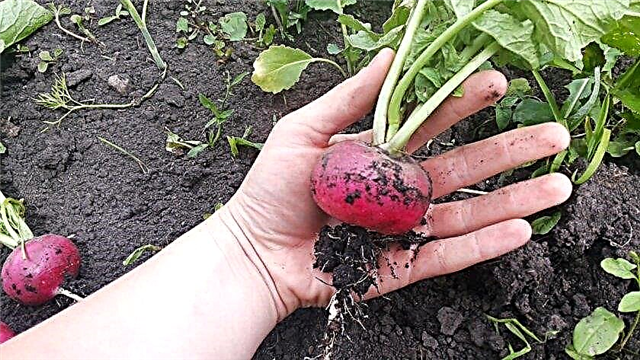
Early varieties ripening in 20–25 days and faster are suitable for sowing in several approaches in order to harvest all summer. In addition to a quick fruit ripening period, early radish varieties are characterized by a lack of susceptibility to temperature extremes and are suitable for sowing in polycarbonate greenhouses even in winter. One of the most suitable varieties in this regard is the All-Season.
Did you know? One of the closest biological relatives of radish is mustard. It is the presence of mustard oils in the composition of the vegetable that determines its severity.
It is designed for cultivation in early spring, summer and autumn. Sowing this variety in open ground is carried out from the end of April with an interval of 2 weeks until mid-August. In autumn it is sown under film shelters, and in winter - in heated greenhouses. The most popular large variety of radishes is the Red Giant. Fruit ripening takes 30–50 days. The resulting crop justifies the name of the variety. Giant radish can reach 300 g.
Popular non-shootable varieties:
- Children's F1 - ultra-early, shoot-resistant variety. When cultivated in open ground, it ripens in 16 days. It is characterized by high productivity and excellent taste.
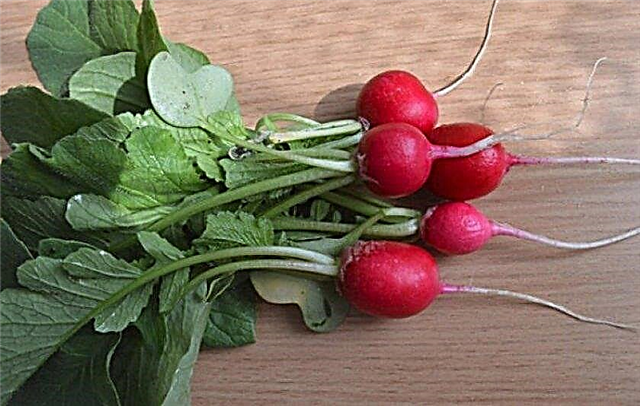
- Early red - characterized by a high level of seed germination. Ripens on average 25 days from the time of sowing. Each plant forms a round red root with a white tip. The pulp has a dense structure, emits a large amount of juice, devoid of bitterness.
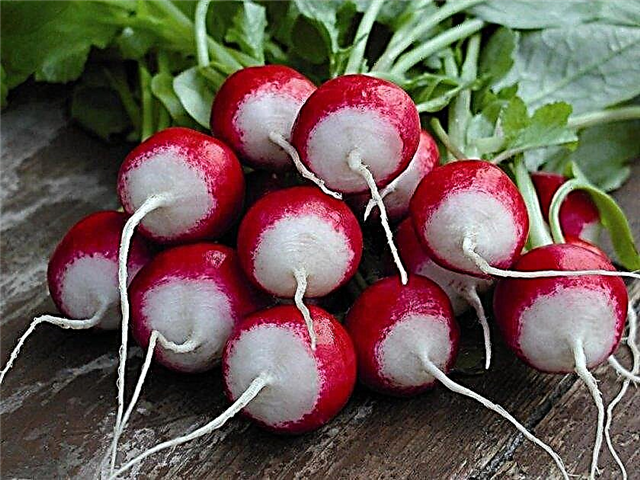
- Rondar F1 - an early ripe hybrid ripening in 20 days. Fruits are resistant to cracking. The pulp is juicy, retains a dense structure for a long time.
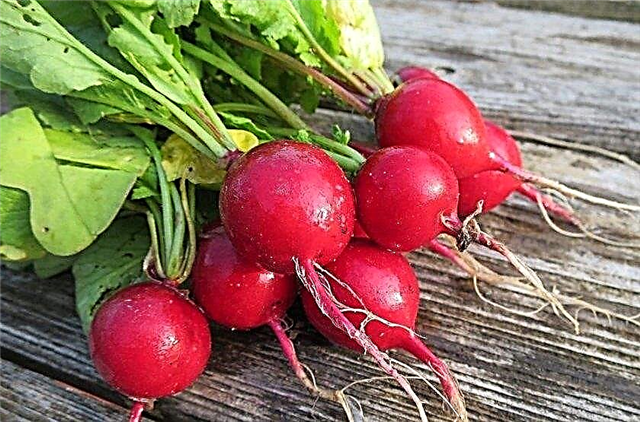
Radish classification
Radish varieties are classified mainly by the maturity of root crops and are divided into 3 large subgroups:
- late ripening;
- early ripening;
- early ripening.
In addition, radishes are additionally grouped into:
- geographical origin;
- growing dates;
- color gamut of fruits;
- place of cultivation (open ground / greenhouses).
By geographic origin
According to geographical origin, 3 types of radish are distinguished:
- European;
- Chinese;
- Japanese.

European variations of radish, the closest in their properties to the present, were bred in France. Dutch and Russian farmers also made a great contribution to the selection. A prominent representative of the Chinese variety is Xiaolobu Hong Kong. It differs from standard varieties familiar to us by its immunity to high temperatures.
It develops well even with summer sowing, does not form a shooter. Radish of this variety, unlike European ones, grows large, weighing 200–500 g. Daikon is also referred to the Japanese radish. Although the variety is reckoned among the Japanese breeding, it nevertheless originated from the Chinese Lobu.
Important! The Japanese type of radish is sometimes called Indian, because the culture is cultivated in this country. In India, this type is called "mulu."
Depending on the growing season
According to the growing season, one-year and two-year radishes are distinguished. In the first case, root crops and seeds are formed by the plant in one year, in the second - the plant forms root crops in the first year, and in the second gives seeds. Xiaolobu is a two-year-old variety.
By color
The color scheme of radish fruits can be quite diverse.
The color distinguishes:
- the black - Duenna, Panther, Winter black, Cool;
- red - Bend, Carmen, Dawn, Ladies whim, Parat, Corundum;
- Violet - Mulatto, Malaga, Blue, Night Beauty;
- yellow - Zlata;
- white - White marshmallows, Mokhovsky, Virovsky, Snow Queen;
- pink red - Lighthouse, Yum-yum;
- pink - Riesenbutter, Yashka;
- pink lilac - Option.

By maturity
Products ripening at different times differ in shelf life. If the purpose of growing is the need for long-term storage, then mid-ripening and late-ripening radish are best for this.
Late ripening
These plants have a vegetation period of 40 days.
Late ripening varieties include:
- Red giant;
- Autumn giant;
- Ice icicle;
- Double F1;
- Rondeel;
- Tarzan;
- Saratov;
- Ertapishar.
Did you know? In all varieties, not only root vegetables, but also leaves are edible - they are added to salads and soups. True, they must be scalded with boiling water before use. In addition, their shelf life is much lower than that of fruits - only 48 hours in the refrigerator.
Early ripening
Ripening specimens mature in 30–35 days.
This category includes:
- Thunder F1;
- Diego F1;
- Vella
- Mars;
- Mercado;
- Carmen
- Esther;
- Valerie F1;
- Rover;
- Mondial;
- Rhodes;
- Jolie
- Okhotsk.
Early ripe
The vegetation period of early crops is 16–22 days.

Early ripening options include:
Check out

- Vienna F1;
- Champion;
- Sax;
- Gloriet;
- Mark;
- Lada;
- Scarlet Globe;
- Cranberries in sugar;
- Multi-colored;
- French breakfast
- Rudolf;
- Donar
- Stellar F1.
If you like mild varieties, then it is better to prefer hybrids of the Dutch selection. They are devoid of bitterness at the genetic level.
At the place of landing
Most early ripening varieties are adapted to any growing conditions and are universal. Plants designed for greenhouse conditions are more restrained in lighting. Crops intended for outdoor cultivation need more light. They will bear fruit poorly in the presence of shading.

In the open ground
For cultivation in open ground, the following varieties are suitable:
- Diego F1;
- Presto;
- Adele;
- Rebel;
- King Kong;
- Askania;
- Ilka;
- Rondar F1;
- Gloriet F1;
- Baron
- Alex F1;
- Javanese;
- Lightning.
Important! To prevent the radish from becoming too bitter, when growing in greenhouses, additional lighting should be equipped and the plants should be provided with abundant watering, preventing the soil from drying out even for 2 hours.
In the greenhouse
For cultivation in greenhouse conditions suitable:
- Rondar F1;
- Diego F1;
- Gloriet F1;
- Adele;
- Melito F1;
- Mondial;
- Mix
- Rover;
- Coral
- Aurora;
- Minova;
- Stellar F1;
- Norhali.
Quite interesting is the Sango variety. You can plant its seeds even in pots and put it on window sills. Products are ready for use already on the 5-6th day. It is interesting that not root crops are eaten, but the ground part - seedlings. The product is characterized by a sharp spicy taste. It is used in salads, as well as in meat and fish dishes. Radish is a valuable vegetable that is one of the first to appear on people's tables after a long winter. Most famous cultures are undemanding and can grow even on the windowsill in the apartment. The most valuable are varieties that can produce a rich high-quality crop, unpretentious to the place of cultivation and resistant to diseases.
Radish is a valuable vegetable that is one of the first to appear on people's tables after a long winter. Most famous cultures are undemanding and can grow even on the windowsill in the apartment. The most valuable are varieties that can produce a rich high-quality crop, unpretentious to the place of cultivation and resistant to diseases.











